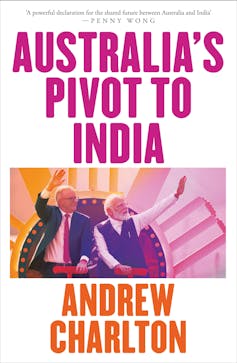Closer relations between Australia and India have the potential to benefit both nations
- Written by Amitabh Mattoo, Honorary Professor of International Relations, The University of Melbourne

The structure of Andrew Charlton’s Australia’s Pivot to India[1] is built on three promises: the promise of India; the promise of the Australia-India relationship; and the promise of the Indian diaspora becoming a powerful mainstream force in Australian politics.
At a time when the Indian diaspora is attracting attention globally, this book – launched on Wednesday by Prime Minister Anthony Albanese – will be read, and read widely.
Review: Australia’s Pivot to India – Andrew Charlton (Black Inc.)
















